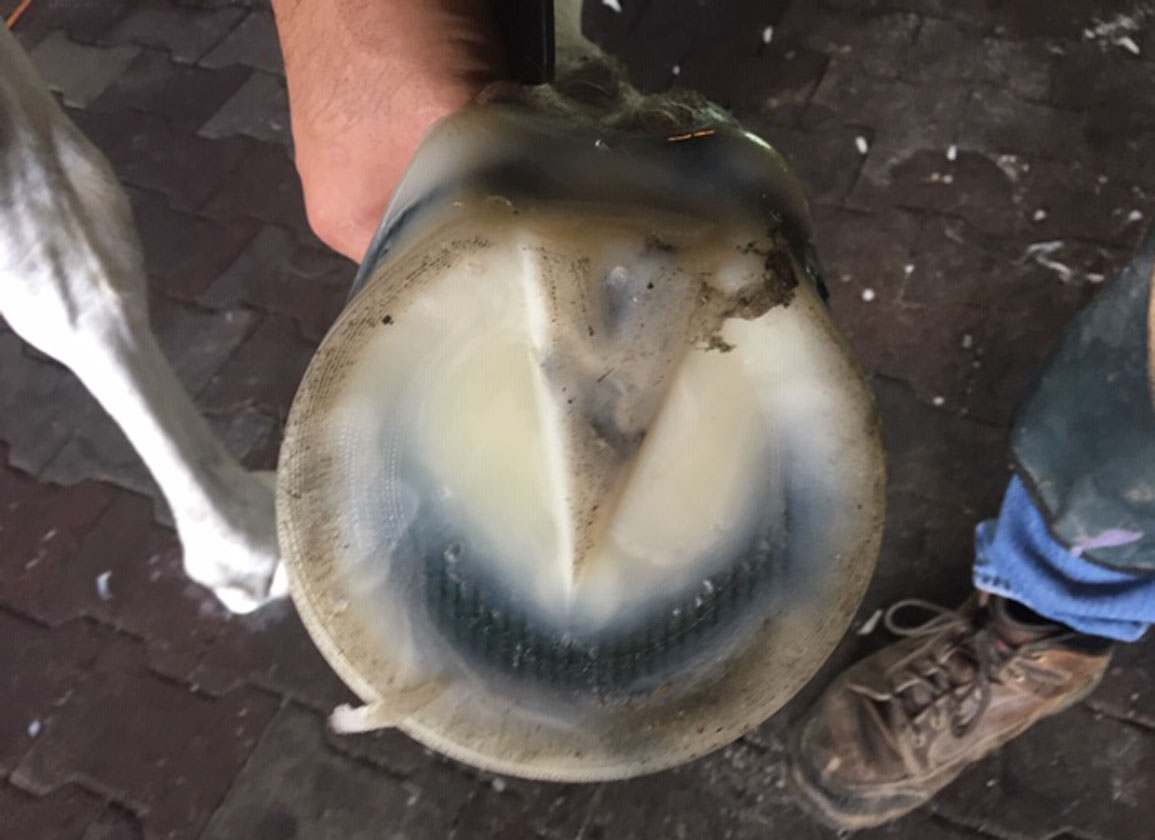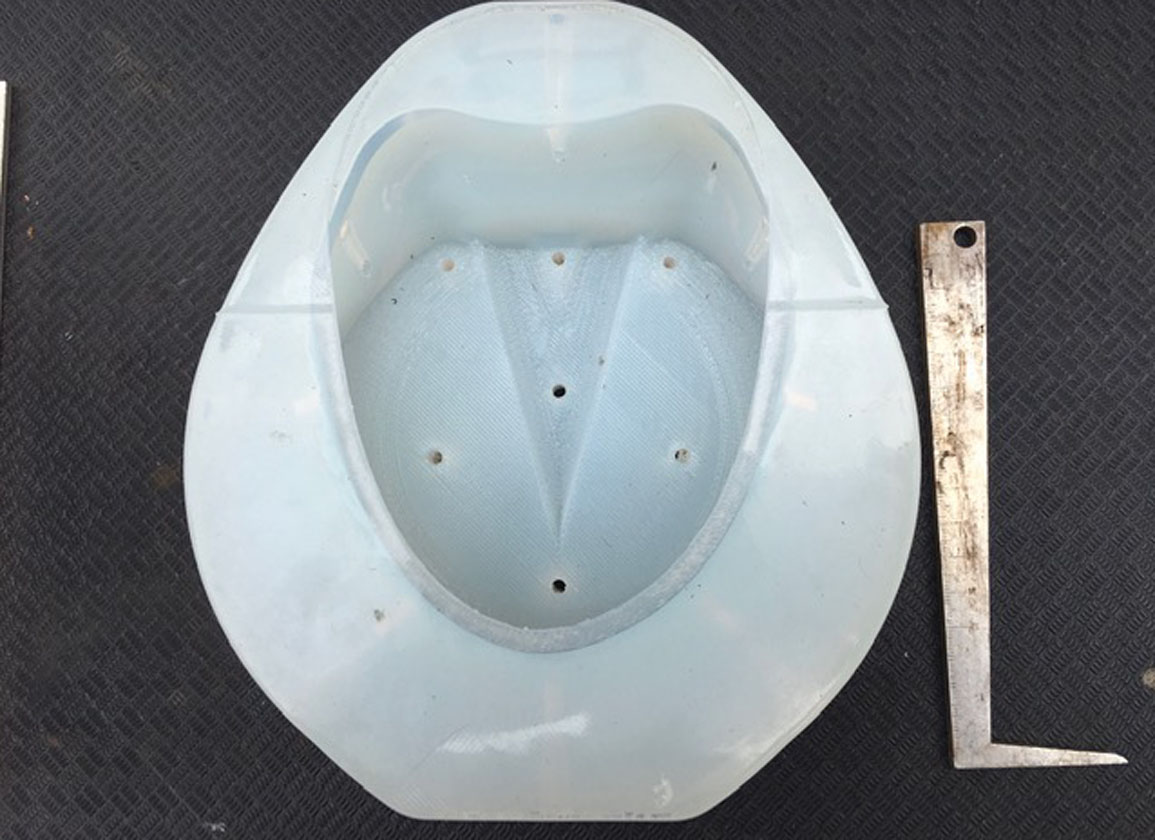By Jude R. Florio
Periodically I find myself on the other end of a call with a client seeking a nonexistent 'tool' in my bag of tricks. It can be awkward to expose one's own ignorance on a topic, not to mention uncomfortable. In these instances, I suspect most farriers don't make it a habit of turning away 'good' clients and some of them reply, “Oh sure, I do that, or use that product all of the time.” Shoeing sometimes requires a certain degree of salesmanship; I believe the Irish call it malarkey.
Given the range of innovation and abundance of out-of-the-box thinkers attempting to bring new ideas and products to market within the farrier industry, it has become essential to have Google and/or YouTube on your speed dial (if that still exists). One click of a button, 'virtually' makes you an expert. When necessary, I'm not ashamed to say, that's what I do too.
Recently, I was advised about a client horse, “Ellie,” who was returning home from an extended stay at the clinic after a severe bout with laminitis. Laminitis, also commonly known as founder, is a painful condition affecting the tissue (laminae), which bonds the hoof wall to the coffin (pedal) bone. The root cause and remedy continues to elude investigators. The mare was reportedly comfortable and stable enough for the van ride home. Additionally, I was advised that she was due, and that a product called 'FormaHoof' was successfully being used by the clinic's farrier. In truth, I was initially skeptical. After multiple phone calls with veterinarians, followed by calls to the clinic's farrier, and activating my online speed dial to view multiple application videos, I acquiesced.
FormaHoof had already been on my radar. After some further investigation, the concept seemed interesting and possibly useful in certain cases. However, when a new product or concept makes landfall at your doorstep, there also can be some level of anxiety. In an industry that is built on sayings like, “you're only as good as your last horse,” undoubtedly there is some pressure to perform.
FormaHoof essentially creates a glue cast, by the use of a mold and a type of fast-set glue which encapsulates the hoof. The process basically creates a cuff, with the glue covering the outer wall to a midway point, as well as the sole and frog. Additionally, there are multiple types of molds: barefoot, traction, or performance. Fortunately, Ellie's front hooves were a similar size which only required the purchase of one mold. (It should be noted: a horse with differing hoof sizes may require the purchase of an additional mold, making the undertaking costlier).
The application requires glue and tips for every application, with the one-time expense of the applicator glue gun. Also provided was a length of plastic/fabric mesh, which is cut and inserted into the mold prior to the hoof and acts as an additional structure for the glue to adhere to. Theoretically, the mold should also be a one-time purchase, however, that is dependent upon hoof size and growth which may require the future purchase of a larger or smaller-sized mold. Multiple applications seem likely for reuse, especially when care is taken ensuring the proper maintenance and storage of the mold(s), which in this instance consists of one horse, two feet, once a month.
A degree of patience is necessary for both the applier and horse, as there is a slight learning curve for correct application. Additionally, some degree of agility and maneuverability are required. The application process requires contorting oneself with steps that include elevating the hoof with the mold and injecting glue into multiple points, followed by lowering the hoof to the ground and maneuvering around the foot to additional glue injection points. Throughout the duration of this hoof/mold/glue ballet, cartridges and tips will likely need to be exchanged, including keen observation of the glue's path and attempting to predict where to move next. I definitely recommend giving oneself some extra time when first attempting this process, and I would advise the purchase of extra glue cartridges and tips until your technique is perfected. It is probable that a few spots will need touching up, but with additional attempts, it does get slightly easier. Admittedly, the ability to perfect the application on the initial go around continues to remain elusive after multiple attempts.
A cost benefit analysis is recommended as some may consider the investment cost prohibitive.
There are multiple scenarios where FormaHoof use would be appropriate, specifically on a barefoot horse where the ability to conventionally affix a shoe is difficult and/or impossible. However, 'flat-footed' horses may not be able to take sole or increased frog pressure as a result of the hoof's encapsulation, an unfortunate reality which may not be initially apparent until after the product is applied requiring the product's immediate removal. In my conversation with the clinic's farrier, he mentioned occasionally experiencing the pressure problem and indicated it was alleviated by the placement of some impression material. Additional concerns may include a horse's transition out of the product and the experience of possible soundness issues with the removal of a 'cuff' glue-on or a hoof cast, when the hoof wall has a negative reaction to the loss of the artificial support created by those interventions. Lastly, the hoof's preparation is key to ensure reducing opportunity for bacteria promotion and/or eliminating the possibility of abscessing which would require the product's removal.
On hand for the initial application for Ellie, Dr. Mark Ketner, DVM of Ketner and Associates, a seasoned practitioner and Monmouth Park veterinarian since 1987, admitted he was “very impressed” with the product. When discussing other scenarios that might warrant the product's use, Ketner said, “[FormaHoof] should be great in situations with significant hoof wall defects, or prolapsed soles.”
He added, “There should be minimal soft tissue effects.”
When asked specifically about the appropriateness for racing, he replied, “Not sure about racing; it would depend on the reason the horse needed the product, assuming significant rotation and sole prolapse would preclude a racehorse from being sound.”
As with all stories, the hope is that they will end happily. Unfortunately, far too many stories of laminitis most often don't. Fortunately for Ellie, this story does. Recently while turned out in the paddock, she decided to take a number of trot steps and then proceeded to successfully exit the paddock with a jump over the four-foot gate! I think it's pretty clear she is feeling good and at the end of the day that's what every farrier strives for.
Not a subscriber? Click here to sign up for the daily PDF or alerts.









